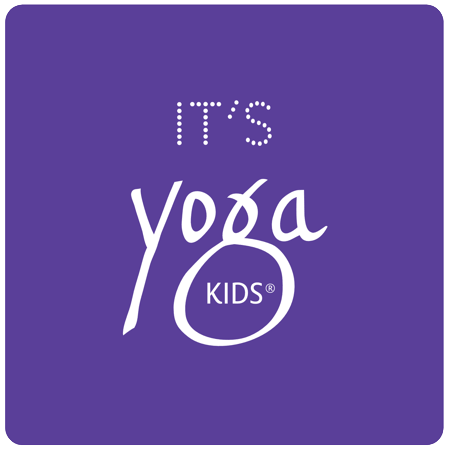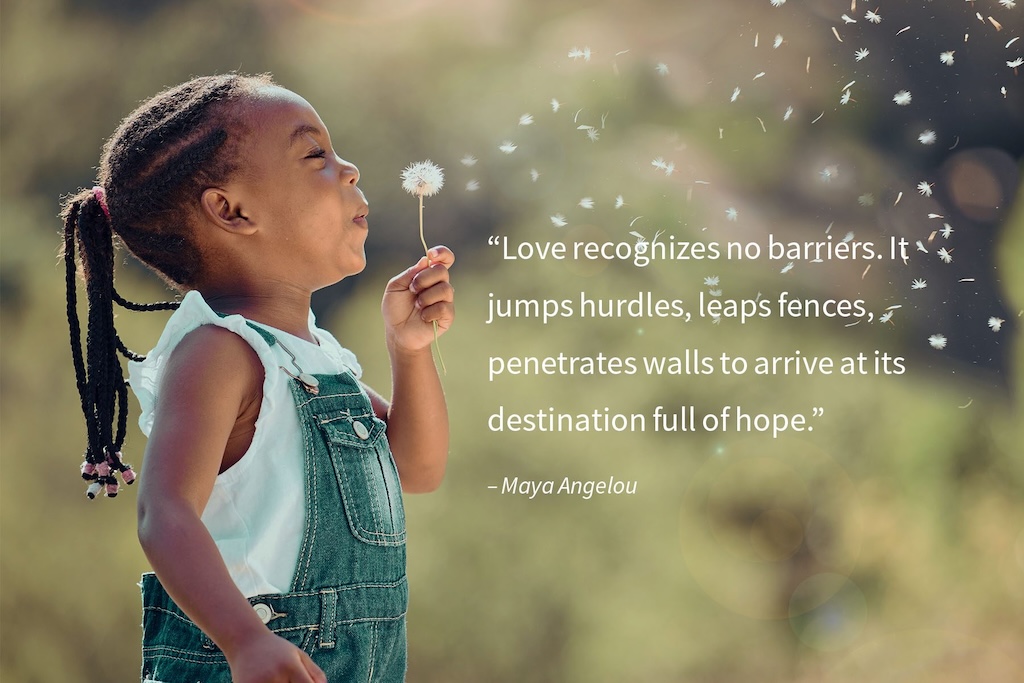Press PLAY to listen to this post.
April is Stress Awareness Month. Let’s face it: stress is unavoidable and necessary. Appropriate amounts of stress boost performance, but too much of it can be harmful. Stressors can include any pressure we encounter on a moment-to-moment basis.
When the body senses a threat (or stressor), it goes on high alert. Once the threat passes, the body quickly recovers. That’s the way it’s supposed to work. But with ongoing or too many stressors, your body may stay in a constant state of high alert, leading to mental and physical health problems.
When stress becomes chronic, the body cannot return to normal functioning. Chronic stress can be linked to depression and anxiety. Stress affects women and men differently. It affects children and teens differently. It’s also individual because some people are more resilient than others.
Yoga offers an opportunity for us to practice playing with stress. When we do that on the mat, we build resilience off the mat — in life. Here’s how:
1. Recognize and name stress. Yoga helps you tune into sensations. Stress is a sensation felt in the body. It can include difficulty concentrating, headaches, a quick heartbeat, cold hands, tight muscles, a nervous stomach, clenched teeth, fidgeting, irritability or withdrawing. Recognize your stress responses and name them. I feel… Then, take action with deep breathing, stretching, walking, writing, or taking a break to focus on reducing tension and inducing relaxation.
2. You time every day. Yoga helps you take care of you. Prioritize your care with your other responsibilities. Pay attention to exercise, eating healthy foods, and sleep. Yoga and meditation are very beneficial when feeling stressed. Also, notice “good things” each day or do something you enjoy, such as reading a book or listening to music, which can shift your attention from negative to positive.
3. Simplify routines. Yoga sequencing creates predictability. Block time and plan meals, morning, after school and bedtime routines. Prioritize tasks and create structures because daily frameworks allow you to account for and manage everyday stressors with more flexibility. Change can be hard — even if it helps as one mom tried “low-demand parenting” to add harmony to her household.
4. People matter. Yoga creates a caring community. Keep in touch with family, friends and groups for support. Having or being a person to talk with can be reassuring and calming. Venting and problem solving each have a place. Some of us simply need to be heard while others prefer solutions. Know who you are talking to and what they are good at…listening or fixing.
5. See multiple perspectives. Yoga inspires empathy. Changing the way we think about and respond to stress is called“reframing.” Sitting in traffic or around the house becomes an opportunity to enjoy music, podcasts or observe scenery. Reduce anger from rude or aggressive behavior by imagining what might be happening in that person’s life. Keeping situations in perspective boosts resilience. Look for the silver lining in all situations.
6. Seek help with problems. Yoga motivates self-advocacy. Seek appropriate care if stress is harming your relationships or ability to work. Talk to a health professional if stress is affecting your well-being, you feel you cannot manage the stress you’re experiencing, or stress has caused you to engage in or increase substance use. If you have suicidal thoughts, call the National Suicide Prevention Lifeline at 1-800-273-TALK (8255). Lifeline chat is a service available to everyone 24 hours a day, 7 days a week. In addition, if you need help locating a mental health provider, the Substance Abuse and Mental Health Services Administration (SAMHSA) offers a site that can assist you.
Recognizing your body signals to stress responses and learning to respond to those signals in new ways can help build the emotional, intellectual and physical strength that comprise resilience, which can help you tackle future stressors. When you do this, your kids learn to do this too. We’ll show you how.
Press PLAY to listen to this post.
When I became a mother, I was working for Microsoft. It was demanding and I loved it! But I longed to be with my baby and I was ready to do something more meaningful to me. I had no idea what that would be. I attended classes at It’s Yoga at 4th & Folsom. The 4:30 Happy Hour classes were notorious. I was amazed by how much yoga enhanced my life. I was physically toned, mentally focused and emotionally balanced. Yea!
If I didn’t get myself to class, I just didn’t feel as good. I was practicing a vigorous form, Rocket Yoga created by Larry Schulz, a long-time student of K. Pattabhi Jois. Larry was “the bad-boy of Ashtanga” because he rearranged the set sequences which is a big no-no in the system. His classes were challenging and fun and were known to become the original forms of Vinyasa Flow and Power Yoga.
When my first was born, I could not get to class anymore so I started an at-home practice way before Covid made that popular. My 18 month old daughter (who just turned 22 years old!) started modeling me in that practice. And she was perfectly modified for her development. I asked myself, “Was she spectacular or was this typical for a young child?” My business degree presented a query and I went on a quest to find out. (BTW, it’s both!) She is spectacular AND it’s typical childhood development. This was 2003. No kids were doing yoga.
I bought a few books and a crappy DVD. I looked for a training. There was only one. It was expensive, lengthy and totally inaccessible to me as a new mom. With my extensive background in dance, athletics and teaching young children, I decided to create my own. It took 3 years of research and development, talking to every pediatric professional and getting adult yoga and prenatal/postnatal certifications. It’s Yoga Kids® was born in 2005 at the same time as my second baby. I left corporate life and became an entrepreneur.
I opened the first Kids Yoga studio in the Presidio of San Francisco and began learning every lesson the hard way! I wish I had had someone to mentor me. There was so much learning - you pay in time and frustration! But, I figured it out! Our method is simple, stable and sustainable. My kids are grown (and awesome)! Through all the trial, error and successes, I realize, I love my momprenuer life! For me, there is no better way to raise your kids, than as a Yoga Mom. It has made me and them, the best we can be.
I’d love to show you how I did it. Because our kids need us to be skilled co-regulators. Plus, you can be a game-changer in your town and up level the whole community. It’s the most rewarding work I’ve ever done! (And gotten paid for.) Wrapping up Women’s History month, I invite you to notice how far women have come, and yet, we have more to go. And we have more choices now than ever to live more happy and free. Please join me.
Press PLAY to listen to this post.
As the world transitions from the serene slumber of winter to the vibrant awakening of spring, the Spring Equinox marks a time of balance, renewal, and growth. It's an opportunity to engage children in yoga to connect them with nature and to encourage mindfulness.
Before diving into yoga practices, introduce children to the significance of the Spring Equinox. Explain how it marks the moment when day and night are of equal length, symbolizing balance and harmony in nature. Discuss the changing seasons, the awakening of plants and animals, and the themes of renewal and growth.
Sun Salutations: Begin the children’s yoga practice with a Sun Salutation sequence to honor the sun, which plays a vital role in the changing of seasons. Guide them through each pose, emphasizing the connection between movement and breath. Encourage them to visualize the warmth and energy of the sun filling their bodies with positivity and vitality.
Flower Poses: Invite the children to embody different types of flowers through yoga poses such as Tree Pose (Vrksasana) for tall, swaying trees, and Lotus Pose (Padmasana) for delicate blossoms. Encourage creativity and imagination as they explore the beauty and diversity of the natural world.
Animal Asanas: Incorporate animal-themed yoga poses to celebrate the awakening of wildlife in spring. Invite children to mimic the movements and characteristics of animals such as butterflies, frogs, and bees. These poses not only promote physical activity but also foster empathy and appreciation for the creatures that share our planet.
Meditation and Mindfulness: Conclude the yoga session with a guided meditation focused on themes of renewal and growth. Encourage children to close their eyes, take deep breaths, and visualize themselves surrounded by the beauty of springtime. Invite them to reflect on their own growth and the positive changes they wish to cultivate in their lives.
Creative Expression: After the yoga practice, provide materials for children to engage in creative expression inspired by the Spring Equinox. They can draw pictures of spring scenes, write poetry about new beginnings, or even plant seeds to nurture and watch grow throughout the season.
Celebrating the Spring Equinox through kids yoga is a wonderful way to instill a sense of connection with nature, promote physical activity, and encourage mindfulness. By engaging in yoga practices that honor the changing seasons, children can develop a deeper appreciation for the world around them and cultivate a sense of balance and harmony in their lives.
So, roll out those mats, embrace the spirit of spring, and let the joy of yoga blossom in the hearts of your little yogis! We’ll show you how.
Press PLAY to listen to this post.
While luck often seems like an elusive concept, teaching children the art of mindfulness through yoga can provide them with invaluable tools for navigating life's ups and downs. Luck, often perceived as random chance, can also be understood as the intersection of preparedness and opportunity.
Luck, by definition, is the occurrence of events that happen by chance and bring about favorable outcomes. While luck can seem capricious and out of our control, there are ways to cultivate a mindset that attracts positive experiences. Psychologists suggest that lucky people tend to be more open to new experiences, resilient in the face of adversity, and actively seek opportunities. This proactive approach to life aligns closely with the principles of yoga.
Here's how yoga can benefit kids in cultivating a lucky mindset:
1. Mindfulness: Yoga teaches children to be present in the moment, paying attention to their breath, sensations in their bodies, and the environment around them. This mindfulness practice enhances their ability to recognize and appreciate each moment with acceptance.
2. Emotional Regulation: By practicing breathing exercises and gentle movements, children develop coping strategies for dealing with stress, anxiety, and frustration. This emotional resilience equips them to navigate life's challenges with more grace and optimism.
3. Physical Health: The physical postures of yoga promote strength, flexibility, and balance in children's bodies. A healthy body sets the foundation for a lucky life, enabling kids to seize opportunities with vitality and vigor.
4. Self-Reflection: Through guided meditation and relaxation techniques, children develop a deeper understanding of themselves and their place in the world. This self-awareness empowers them to make conscious choices that align with their values and aspirations.
5. Connection: Through partner poses and group activities, children learn to communicate, collaborate, and empathize with their peers. This sense of belonging strengthens their social bonds and expands their support network, increasing the likelihood of encountering lucky opportunities through meaningful relationships.
In the journey of life, luck is not merely a matter of chance; it is a mindset cultivated through mindfulness, resilience, and gratitude. By introducing children, especially sensitive children, to the practice of yoga, we equip them with essential tools for navigating life's twists and turns more easily. As they learn to embrace the present moment, regulate their emotions, and connect with themselves and others, they unlock the true essence of luck – the ability to recognize and seize opportunities for growth and fulfillment.
Let’s roll out the yoga mats, take a deep breath, and embark on a journey of luck and mindfulness with our children. After all, the greatest luck of all is the opportunity to live fully and authentically in the present moment. Practice with us. We’ll show you how.
Press PLAY to listen to this post.
Marching into Women's History Month, this is a time to honor the indomitable spirit, achievements, and contributions of women throughout history and in modern society. It's also a time to empower the next generation, including young girls, to recognize their potential and celebrate their uniqueness. One powerful way to do this is through the practice of yoga, which fosters physical health and nurtures emotional well-being.
Educators, parents, and caregivers have a unique opportunity to introduce young minds to influential women who have made a significant impact in various fields. Incorporating stories of women trailblazers, scientists, artists, activists, and leaders into yoga sessions can inspire children to recognize their own potential.
Yoga Poses Inspired by Women Icons:
1. Warrior Pose (Virabhadrasana II) - Inspired by Malala Yousafzai, this pose embodies strength, courage, and determination.
2. Tree Pose (Vrksasana) - Inspired by Wangari Maathai, this pose symbolizes balance, growth, and environmental consciousness.
3. Butterfly Pose (Baddha Konasana) - Inspired by Maya Angelou, this pose represents grace, creativity, and inner strength.
4. Mountain Pose (Tadasana) - Inspired by Michelle Obama, this pose embodies poise, resilience, and empowerment.
It's essential to create inclusive yoga spaces that empower all children to foster a sense of belonging. As we celebrate Women's History Month, let's remember the importance of empowering young minds and nurturing their potential.
Through the practice of yoga, children can cultivate physical and mental health, emotional well-being, and self-confidence while learning about influential women who have shaped history. Let's continue to create inclusive spaces where all children feel valued, inspired, and empowered to embrace their individuality and contribute positively to the world. Happy
Women's History Month and happy yoga practicing to all!





